Lizzie Carr’s Stand-Up Paddleboard Buyer’s Guide
Paddleboarding expert and world-record holder Lizzie Carr breaks down what you should look for when buying your first, or your next Stand-Up Paddleboard.
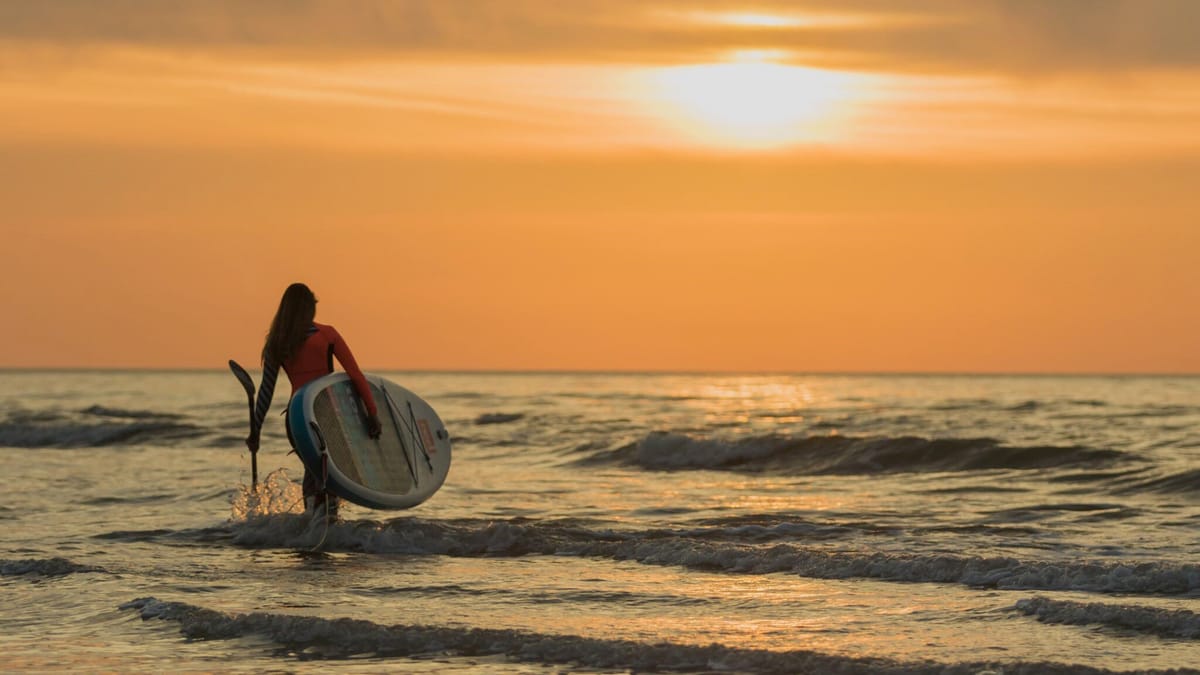
If you tried paddleboarding this summer and you are looking to purchase your own board (by taking advantage of season-end deals), or if you’re an experienced paddler looking for a board to progress with, then this is the guide for you.
Lizzie Carr practically lives on paddleboards. She’s set three world records by crossing the English Channel, traversing 400 miles of England’s inland waterways and, most recently, paddling the entire length of the Hudson River to raise awareness for the global plastic crisis and to share a way for everyone to get involved by arranging cleanups through her non-profit Plastic Patrol. To date, users of the Plastic Patrol app have cleared over 210,000 plastic items around the globe. (Read about how Lizzie turned her cancer diagnosis into a catalyst to break world records and clean up the Earth's waterways).
In her own words, Lizzie reveals which boards she chose to complete her record-setting challenges and she also shares tips for both beginners and intermediate paddlers who are also passionate about this increasingly popular and accessible sport.
MY CURRENT GO-TO BOARD
“I've ridden iSUP's in every single one of my world record challenges.”
I've been using the Fanatic Diamond Air Touring board 11’6” quite a lot for my personal SUP riding. This board’s quite good for being out on the ocean as well as on the waveless inland waterways. Its nose shape is pointed, which makes it great for gliding. However, when I arrange group cleanups for Plastic Patrol, we use the Fanatic 10’6” Fly Air, the perfect all-around, beginner-friendly board. My longer 11’6” board is not any less convenient in terms of portability because it deflates to roughly the same size as my 10’6” Fly Air. After a training session or a cleanup, I deflate them, roll them in the rucksacks and toss them in the trunk.
INFLATABLE BOARDS VS. HARD BOARDS
The market is really growing in terms of the inflatable options, and for good reason. When it comes to both quality and durability, inflatable technology has reached the point where it would be difficult for me to recommend a hardboard to someone just getting into the sport.
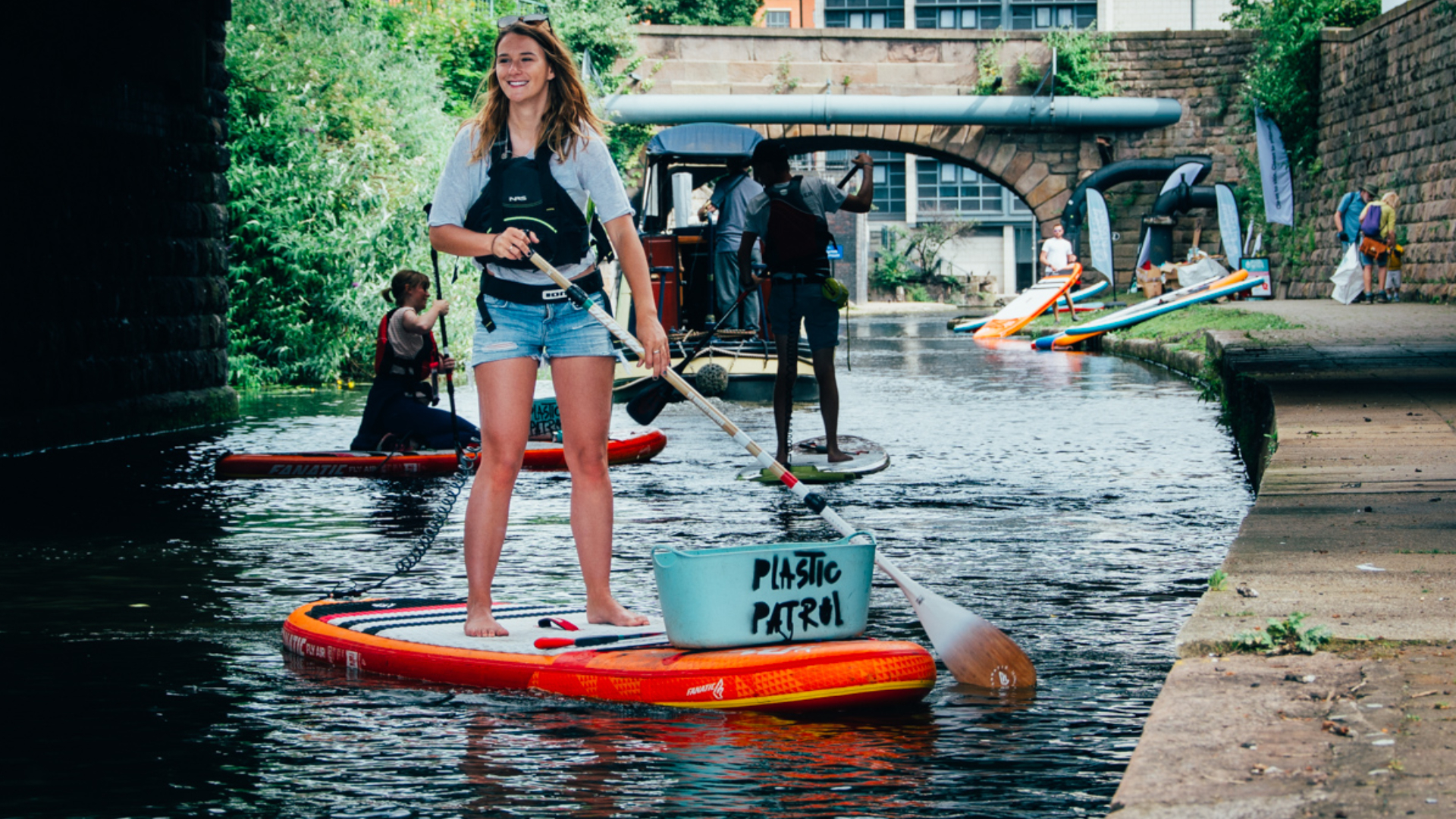
I only ride inflatables. I've ridden inflatables in every single one of my challenges. I crossed the English Channel on an inflatable, I traversed the Hudson on an inflatable. There were definitely limitations in terms of performance, and it probably would have been easier to cut through some of the chop of the waves on a hardboard because the nose can be much more pointed which allows you to slice through the water much easier. Sometimes people are shocked to learn that I rode an inflatable board to cover the 24-mile crossing of the English Channel. They ask me, “What if a slow leak caused it to lose air over time?” To be honest, that thought never crossed my mind. Once I’m comfortable on a board, when I get a feel for how to move on it, then I want to use that board. Before making the commitment to go for that challenge, knowing the dangers, I made sure that I had complete trust in my kit. I personally pumped it up on the beach and never looked back.
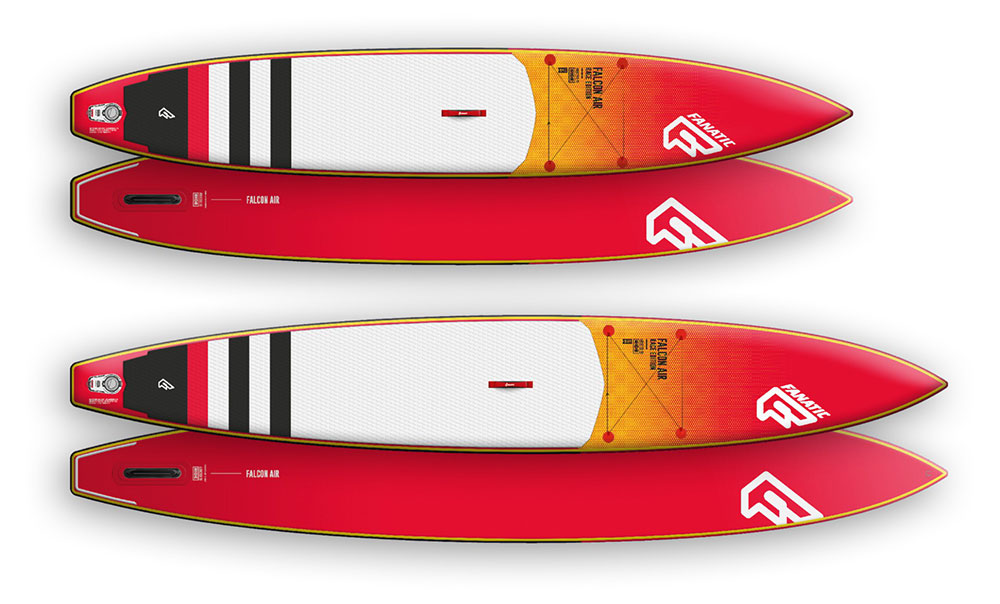
With that being said, I don’t think that inflatables have gotten to the point where they are at such a good quality that hard boards are going to become obsolete. There's always a place for hard boards, especially in the competitive racing scene. Hardboard designs are so sophisticated now and they're so light that they can really make a big difference to your paddling quality in that context. But with more and more people looking to SUP as a leisure activity, the inflatable option makes the sport more accessible.
INFLATABLE PUMP UP TO WARM UP
Some people might think that having to pump up your inflatable board before use might be considered a downside, but I always think of it as a warm-up. When you're pumping up your board, you're starting to activate some of the muscles you’ll be using to paddle and also generally readying the entire body for exercise so that when you're on the water you can just enjoy paddling. I think it's really important to warm up. Just because SUP is considered a low impact sport, it doesn't mean you shouldn't take steps to properly prep your body.

STORAGE WARS
Reading this article, you might expect that I’d need a giant garage filled with different board sizes and shapes to match the different styles of paddling I do. But they're inflatable aren't they? I live in a really small flat and I used to just keep them all in the flat, even the ones for Plastic Patrol group cleanups. Just imagine looking for that sweater you want to wear while lifting up, sliding over and ducking under stacks of rucksacks. But, recently it’s gotten to the point where I actually do need a storage facility because our cleanup fleet continues to grow.
BRANDS YOU CAN TRUST
I started out on an inflatable SUP by Red Paddle Co. It was a 10’6” very basic beginner board which was just a really stable, buoyant and comfortable entry board.
I didn't even own a board when I did my first record challenge over 400 miles on England’s waterways. I was lent a Red Paddle Explorer 13’2” by the club I had first joined to learn the basics of the sport. I needed the extra length to fit all of my food and camping gear for the three-week journey. I crossed the channel on that one as well. It’s since been renamed the Voyager.
Fanatic is the paddleboarding partner for Plastic Patrol, so they supply all of our boards for our Plastic Patrol cleanups. I’ve been using their boards on Plastic Patrol cleanups and I've really loved the boards I've used. But, I have not actually affiliated or been sponsored by any paddleboarding brand because that means I can actually have honest conversations like this.
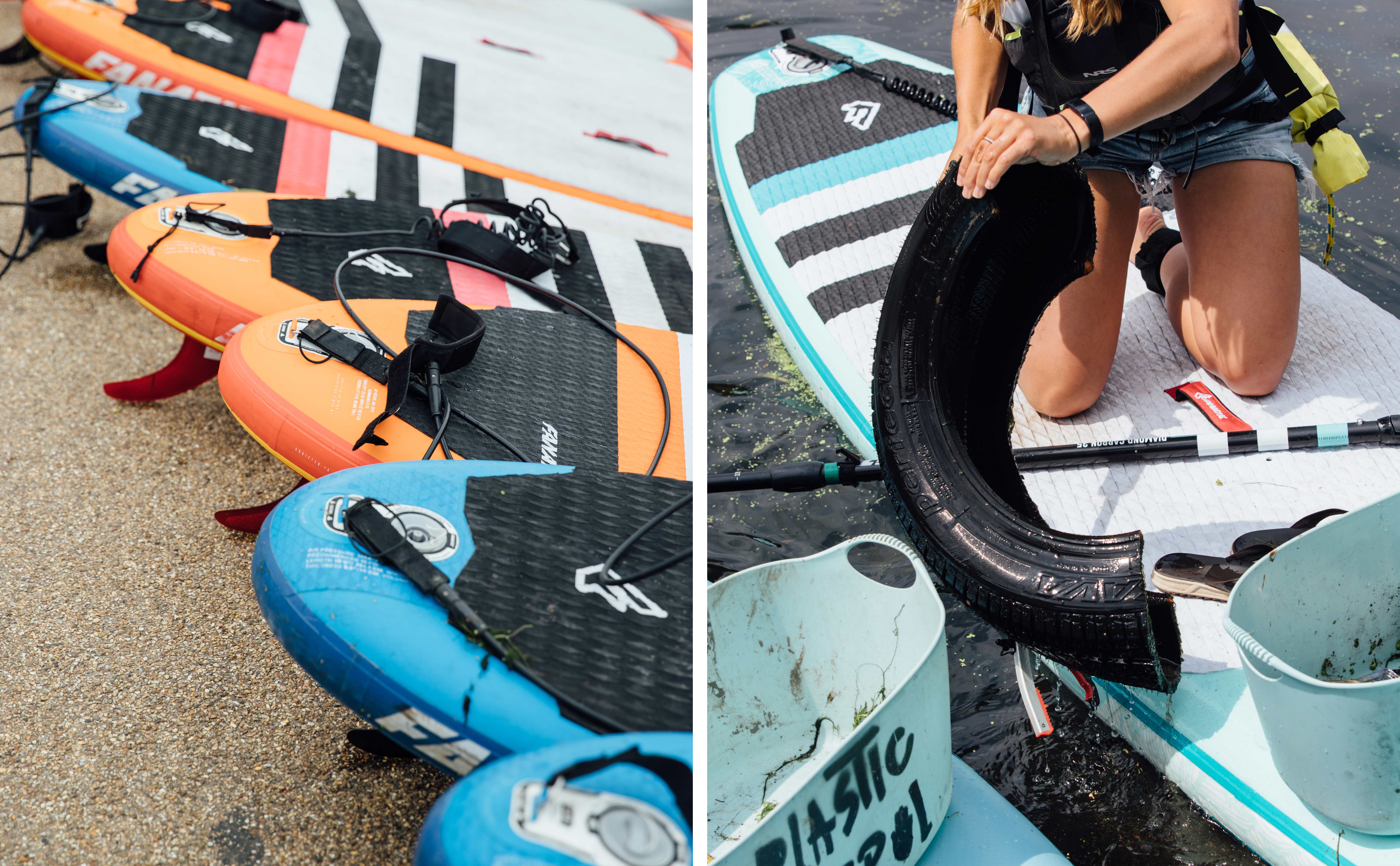
Starboard is an amazing brand for sustainability with amazing green credentials and hugely innovative designs. I have ridden them a few times but I don't own one. It's really nice to be able to try out different boards and I do always advise people before they do buy anything to try and demo as many as possible - go to clubs and try out the different lengths, width’s and volume to get a feel for what they like.
SURF’S UP
For general riding and touring, I tend to gravitate towards the 10’6” and above range for the ease of gliding, however, when I’m in the mood to hit the surf and ride waves, I go with my Fatstick 9’8”. I've used that mainly for SUP surfing because it is smaller and it's more like an oversized surfboard. So, that's what I use the smaller boards for.
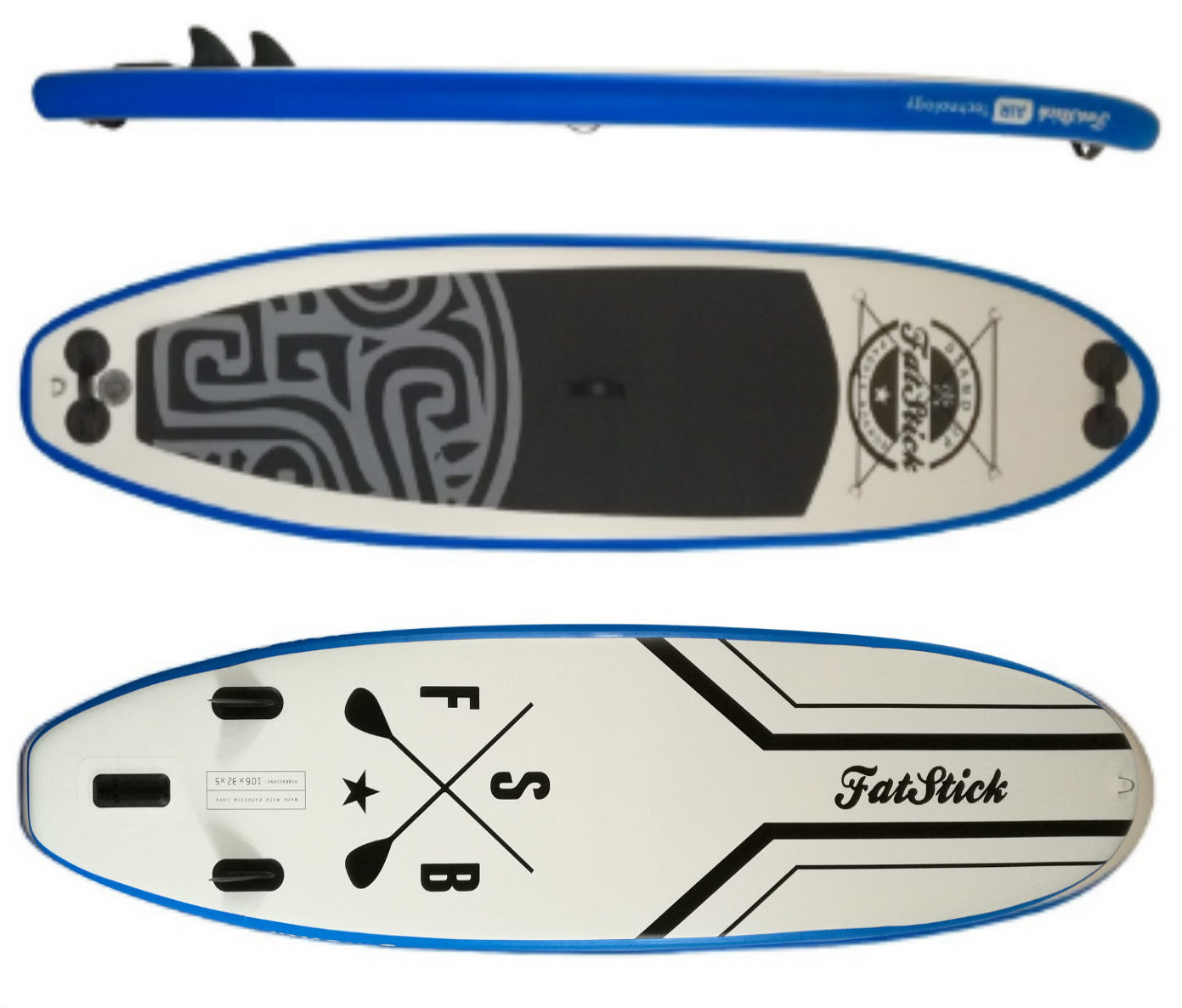
SPECS TO LOOK FOR
When I examine a board, the first things that I look for are length, width and nose shape. When I did the challenge on the Hudson, I picked a really narrow board. It was 26” wide and I usually ride like 29” or 30” but I thought the 26” would be faster and more dynamic. Turns out, I didn't like the 26”. I'd rather go back to a 29” with just a little bit more width and stability. That extra room for movement is critical because once you start to tire, that’s when you start to make mistakes. If you're on a 29”, you are on a slightly wider board that is more forgiving than a narrow racing-width board.

LOW PRICE-POINT BOARDS
With the growing popularity of SUP, large retailers like Decathlon are reacting to the market but introducing low price-point boards even as low as the $200 range. More and more people are showing up to Plastic Patrol cleanups with their own boards like the Itiwit brand from Decathlon, or some other notable up and coming brands like Sandbanks or Two Bare Feet. On the one hand, I think these “challenger brands” are great because they give people access to the sport at a much cheaper price point than some of the other more established brands. But, you do ultimately pay for what you get. For the extreme challenges and also the daily work that I do, it’s critical that I have trust in my kit.
THE RIGHT TIME TO BUY YOUR FIRST BOARD
For someone who has gotten very familiar with the sport and has a summer's worth of experience under their belt, I would say don't buy necessarily a beginner board. If you're using a beginner board and you’re not comfortable on it, you should still be going to your local SUP club and having classes and learning how to paddle. And then, once you find those boards quite sluggish - which I think happens quite quickly for most people - that's when I would start thinking about buying a board. Although I think it's really easy to assume that there's not a great deal to learn with paddleboarding, I think everyone needs to get drilled down on the basics and proper safety techniques. To become an efficient paddler, to understand the conditions that you're in and how to adapt to them, you do need to have lessons at clubs. So I always say, don't necessarily buy beginners level board brand new, but invest a little bit more when you've got a bit more experience, when you know you're going to keep it up, and get a board that you can grow into and use for a much longer period of time.
Buying a board also highly depends on what type of activity you’re going to be doing. Are you going to be touring down the coast? Are you going to be traveling long distances? Are you going to be riding waves? Different styles of boards work best in different conditions and activities. (Listen to the full podcast episode with Lizzie Carr here.)
THE RIGHT PADDLE
Aside from making sure you purchase a paddle that floats (shockingly, some retailers are still making this mistake), what else would one look for when purchasing a paddle? Finding a paddle made from a lightweight material is most important. That's been a journey for me. The difference between my first paddle and the one I use now is leaps and bounds. I got my first fully carbon paddle for the Hudson project. Before that, I was using 50% carbon just because the fully carbon ones are really expensive. That was a game-changer for me because I could feel the efficiency in how I was able to conserve my energy because the paddle was lighter over the long distances.
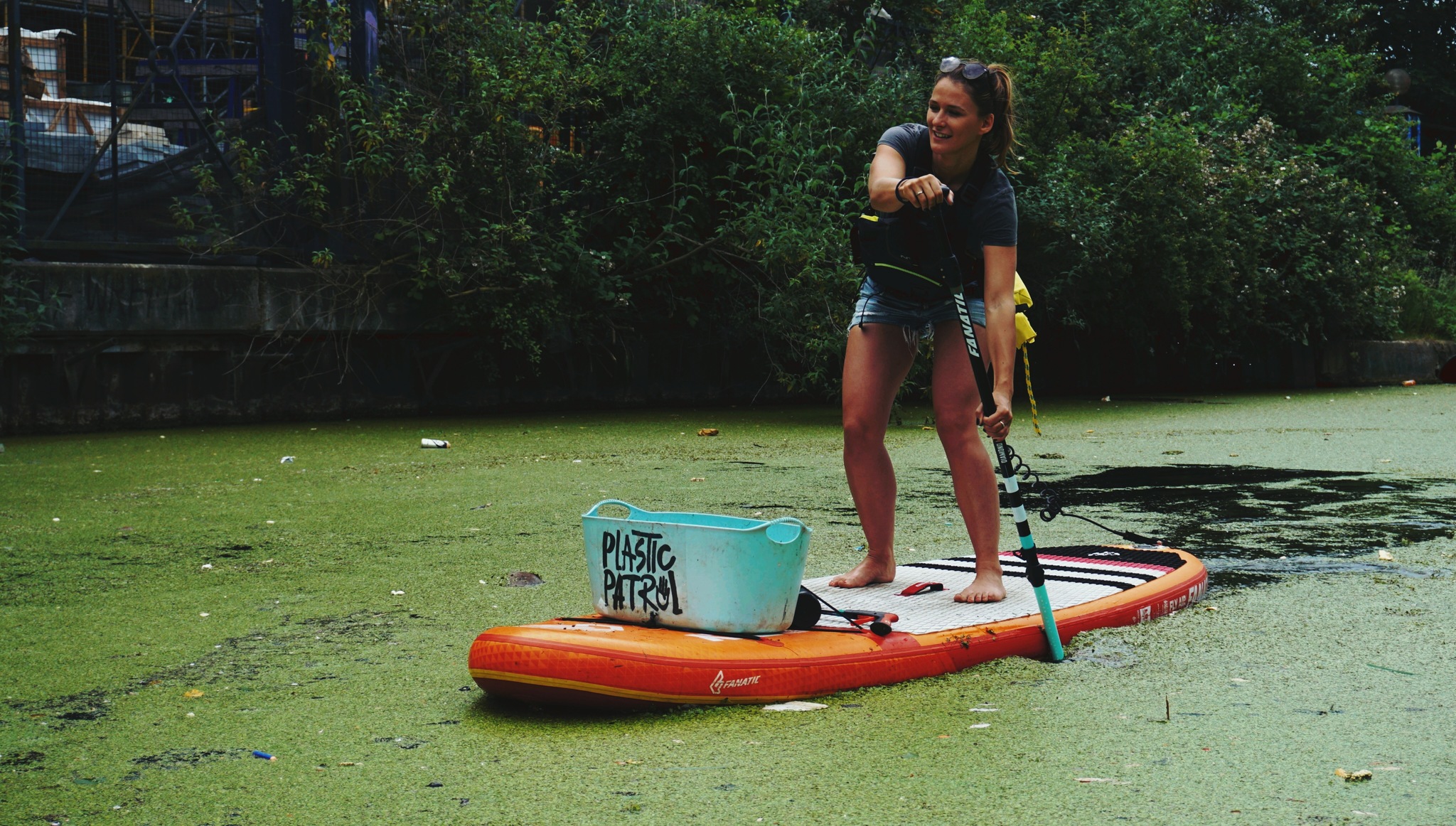
LEASHES ARE YOUR LIFELINE
Your leash is your lifeline to your board and also your flotation aid, but it can also be the most dangerous part of your board. There's a lot of misunderstanding about which leash to choose and when to wear them on the water. Sometimes, even wearing a leash that is not a match for the type of water you’re paddling can actually do more harm than good. For example, on the Hudson, I needed a coiled, waist leash with a quick-release belt. If you’re riding fast-flowing water with strong currents, a straight leash would be the wrong choice because it could get caught on debris and rocks in the water. With the wrong leash tied up around your ankle, it would be really hard for you to detach it from your ankle in strong flowing waters. That's why, again, it's so important that people take lessons and go to classes because it's serious stuff and things can start to get dangerous if people aren't understanding the kit properly and how they should be using it.

You can get involved with Plastic Patrol by checking out the following social media links:
Websites
www.plasticpatrol.co.uk
www.lizzieoutside.co.uk
Facebook
@LizzieOutside
@PlasticPatrolOfficial
Instagram
@lizzie_outside
@Plastic_Patrol



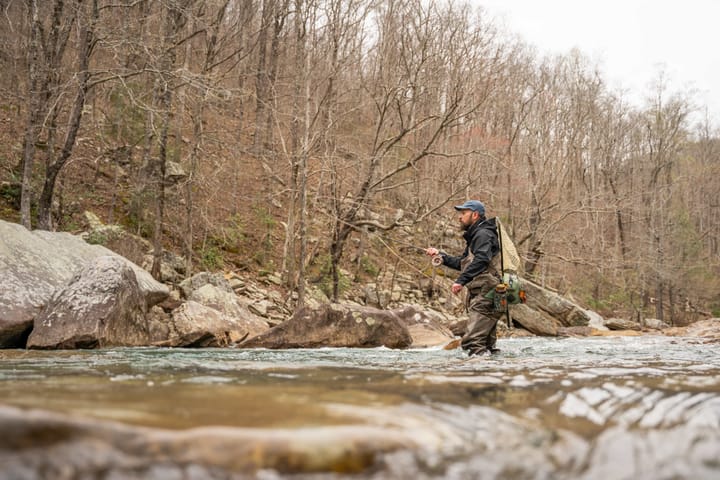

Comments ()